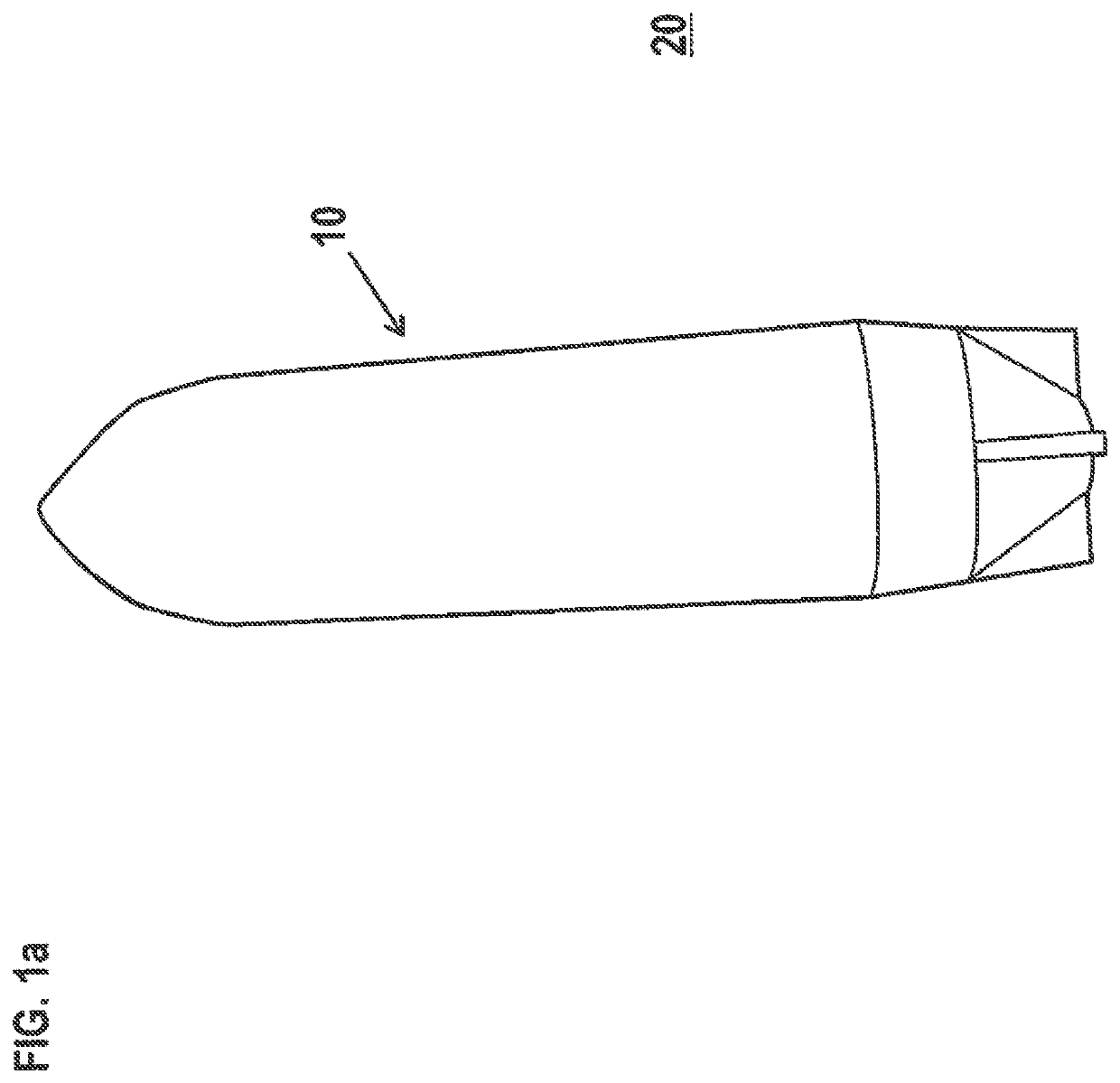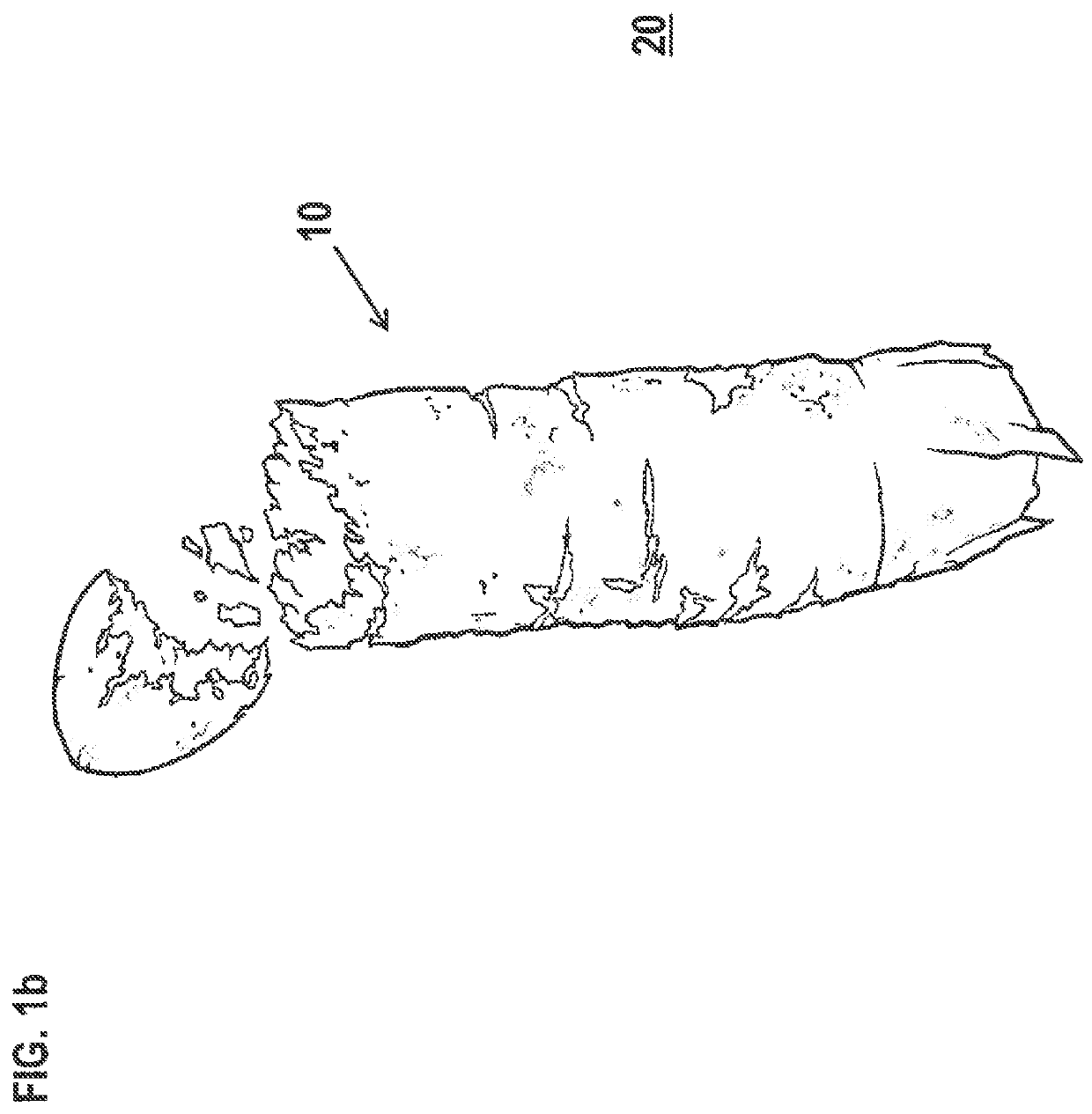Marine biodegradable composition for 3-D printing
- Summary
- Abstract
- Description
- Claims
- Application Information
AI Technical Summary
Benefits of technology
Problems solved by technology
Method used
Image
Examples
Embodiment Construction
[0013]FIGS. 1a, 1b and 1c illustrate an exemplary vehicle (such as a UUV) constructed by a 3-D printing process using the marine biodegradable material of the invention at various stages of the degradation cycle. As discussed above, the vehicle may be used to house and transport a variety of materials and equipment, such as sensors, fuel, motors, batteries, explosives, or chemical compounds (collectively referred to herein as the “payload”). In some embodiments, while it is intact the vehicle insulates and protects the payload from the often harsh ambient underwater environment. When the vehicle degrades, as discussed herein, seawater is able to enter the internal compartments of the vehicle and come into contact with the payload. In some embodiments, the seawater will deactivate payload equipment or materials such as sensors, motors, explosives, etc.
[0014]By means of illustration and not limitation, assume that the embodiment shown has a 180-day life cycle. FIG. 1a depicts a vehicl...
PUM
| Property | Measurement | Unit |
|---|---|---|
| Temperature | aaaaa | aaaaa |
| Temperature | aaaaa | aaaaa |
| Biological properties | aaaaa | aaaaa |
Abstract
Description
Claims
Application Information
 Login to View More
Login to View More - R&D
- Intellectual Property
- Life Sciences
- Materials
- Tech Scout
- Unparalleled Data Quality
- Higher Quality Content
- 60% Fewer Hallucinations
Browse by: Latest US Patents, China's latest patents, Technical Efficacy Thesaurus, Application Domain, Technology Topic, Popular Technical Reports.
© 2025 PatSnap. All rights reserved.Legal|Privacy policy|Modern Slavery Act Transparency Statement|Sitemap|About US| Contact US: help@patsnap.com



